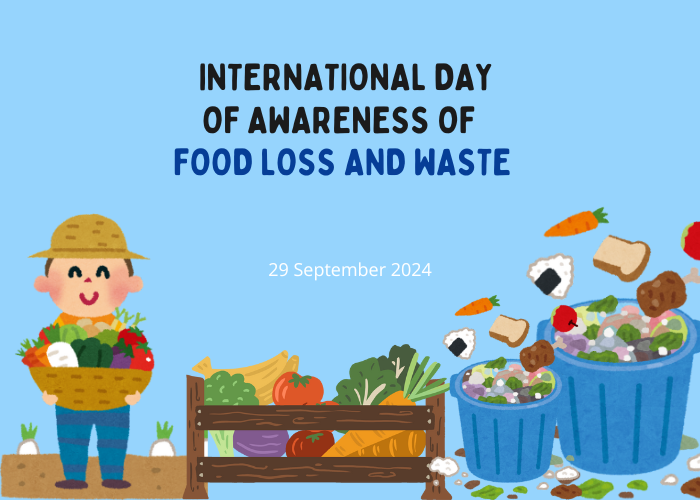Food waste and losses: over a billion meals thrown away every dayINTERNATIONAL DAY OF AWARENESS OF FOOD LOSS AND WASTE
- 29 September 2024
- Posted by: Competere
- Category: Senza categoria

September 29 marks the International Day of Awareness of Food Loss and Waste. But what do these two terms mean? Food loss and waste encompass all products that are discarded, eliminated, or disposed of, not only in the later stages of the supply chain—such as in commercial distribution, restaurants, or more commonly in our homes—but also in earlier stages—during cultivation, harvesting, storage, transportation, and processing—when products are lost, mainly due to “unintentional” causes.
FOOD WASTE AND WORLD HUNGER: AN UNACCEPTABLE PARADOX
Globally, one billion meals are wasted every day, equivalent to one-fifth of the world’s food production (according to UNEP data). Around 13% of total food is lost along its respective supply chain. However, the most significant waste occurs in our homes, accounting for 60% of total food waste. Added to this are 421 million tons of food wasted in the restaurant and retail sectors. This is an alarming figure, considering that today, around 733.4 million people (according to FAO data) suffer from hunger worldwide—a number that has been steadily increasing since the beginning of the pandemic. In 2019, the total was 581.3 million; in just five years, the number of people facing hunger has risen by over 150 million.
ITALY: A VIRTUOUS COUNTRY, BUT WITH CHALLENGES TO FACE
Italy is one of the most virtuous countries in preventing food waste, especially compared to nations like the United States or Canada, yet it still falls behind countries such as Germany and France. However, recent data from the Waste Watcher International Observatory shows that food waste in Italian households has risen to 683.3 grams per week, with a worrying increase of 45.6% compared to the previous year. This translates to over 13 billion euros worth of food wasted each year, equivalent to 126 euros per person or 290 euros per family.
But what is the “top 5” of most wasted products? Fresh fruit, vegetables, fresh bread, salads, and tubers, all foods that spoil quickly. Furthermore, the data shows that households in large cities and larger municipalities waste more, with Southern and Central Italy performing worse than the North. Additionally, households without children and those with lower purchasing power tend to waste more.
The increase in food waste in Italy is partly attributed to consumer habits: 37% of Italians forget food in the fridge until it spoils, only 23% plan weekly meals, and 75% do not reuse leftovers. Adding to this is the poor quality of purchased products: many foods, especially fruits and vegetables, deteriorate quickly after purchase or are sold in less-than-optimal conditions. These figures are paradoxical considering that 3.1 million Italians (Fead data) are in a position where they need to seek help for food, relying on soup kitchens or food packages.
OUR ACTIONS MATTER: WHAT CAN WE DO?
It is possible to take action. Here are some concrete actions that can make a difference:
For producers:
- Invest in local agricultural infrastructure in developing economies.
- Replace underdeveloped farming techniques with advanced industrial processes.
- Support small enterprises in meeting sustainability standards.
For the processing and distribution industry:
- Implement cold chain management systems for transportation.
- Use predictive analytics and machine learning to optimize the supply chain.
- Adopt advanced packaging to extend food shelf life.
For consumers:
- Store food properly.
- Plan weekly shopping and stick to the list.
- Creatively repurpose leftovers.
By adopting these practices, we can contribute to a more sustainable and fair future, addressing the challenge of food waste and loss with awareness and responsibility.

